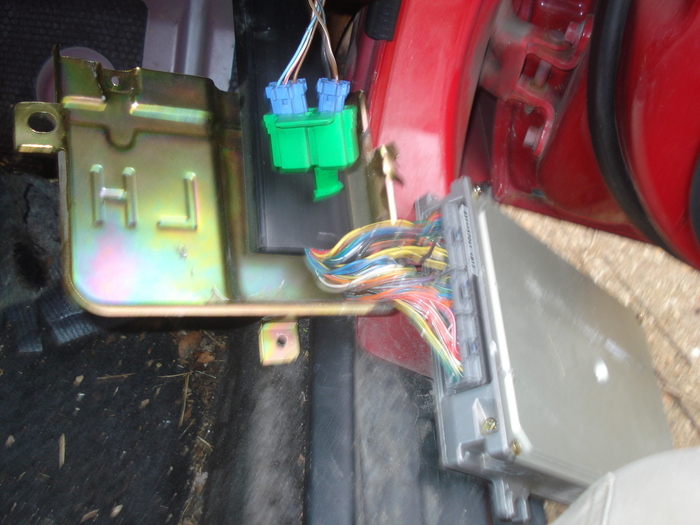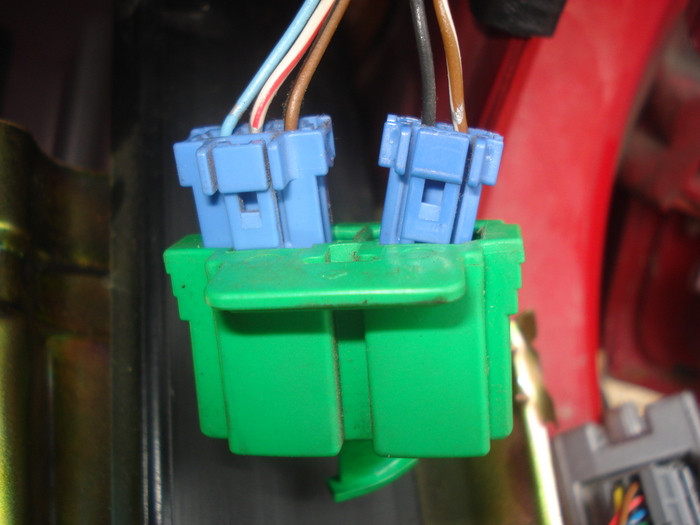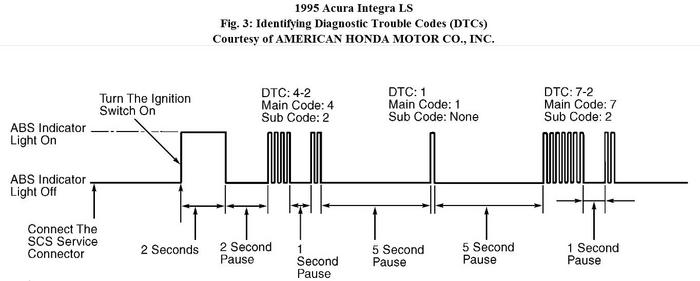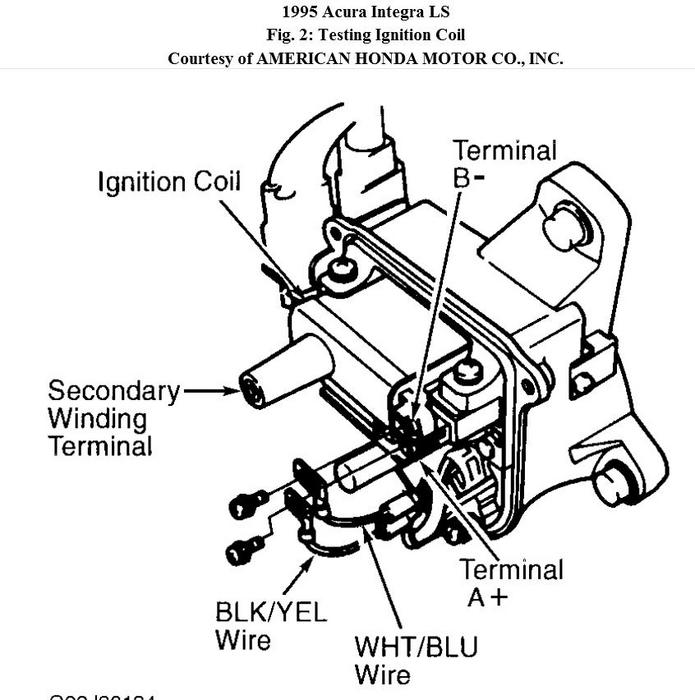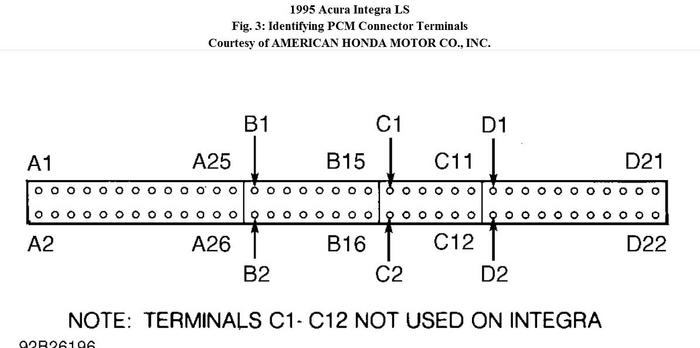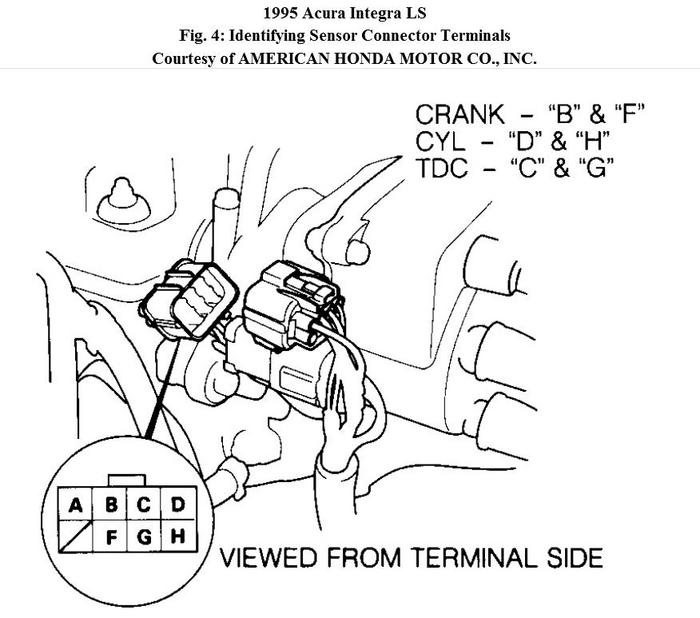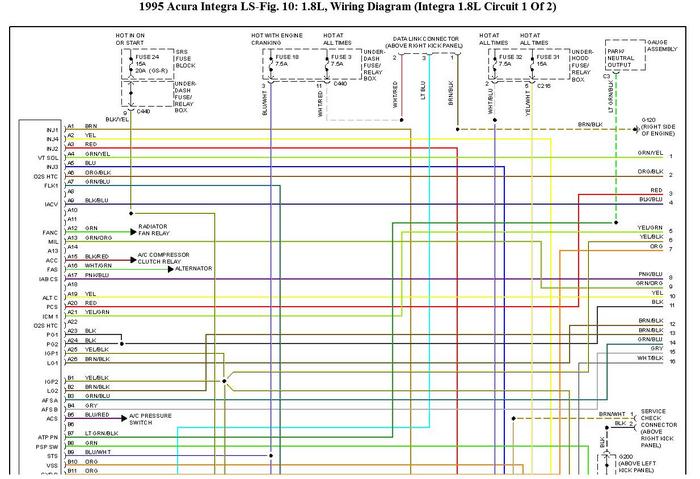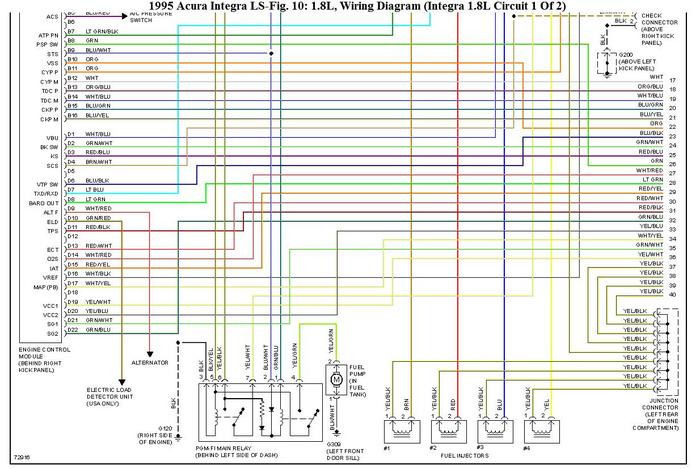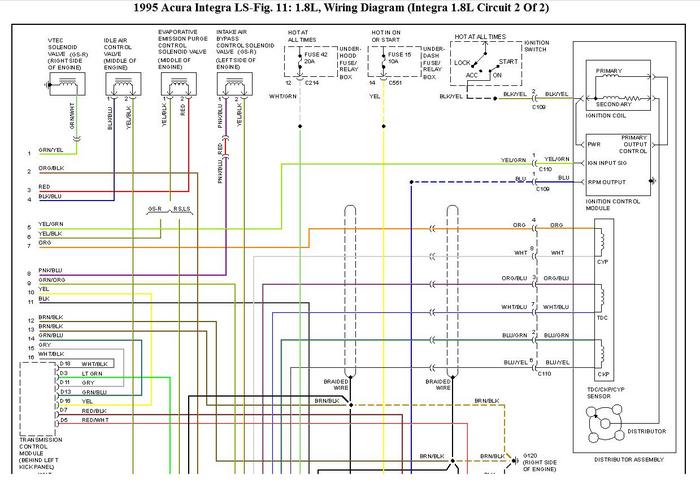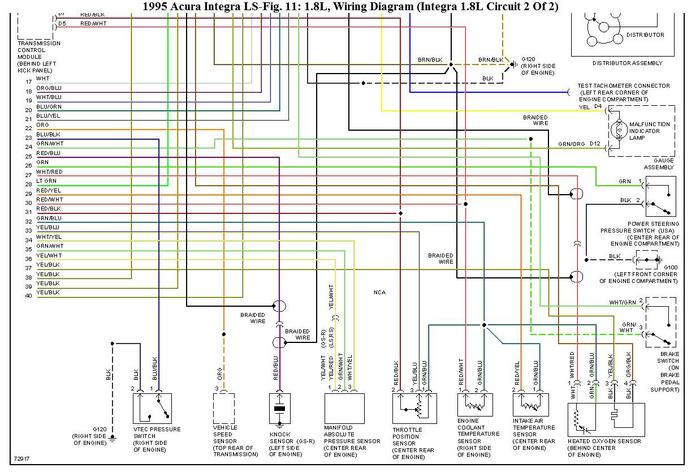IGNITION CHECKS
ELECTRONIC IGNITION SYSTEM
Spark
1. Crank engine. Using a high output spark tester, test for a strong Blue spark at each secondary ignition plug wire. If spark is not as described, go to next step.
2. Verify resistance of each spark plug wire is not more than 25,000 ohms. Unplug and inspect all related ignition system connectors and harness. Clean or repair as necessary, and recheck spark. If strong Blue spark is still not present, go to
IGNITION COIL POWER SOURCE.
Ignition Coil Power Source
1. Remove distributor cap. Disconnect ignition coil primary leads. Turn ignition on. Measure voltage between ground and Black/Yellow wire of ignition coil wiring harness. See Fig. 2.
2. Battery voltage should exist. If battery voltage does not exist, inspect for open in Black/Yellow wire between ignition coil and ignition switch. If wire is okay, go to IGNITOR INPUT TEST procedure.
Ignitor Input Test
1. Turn ignition off. Remove distributor cap and rotor. Disconnect Black/Yellow, White/Blue, Yellow/Green, and Blue wires from igniter. Turn ignition on. Test for battery voltage between Black/Yellow wire of harness and body ground.
2. If battery voltage exists, go to next step. If battery voltage does not exist, inspect for open in Black/Yellow wire between ignition switch and igniter wiring harness connector. If battery voltage exists, inspect for voltage between White/Blue wire and body ground. If battery voltage does not exist, inspect White/Blue wire and ignition coil for open circuit.
3. Unplug PCM wiring harness connector. Inspect Yellow/Green wire for continuity between PCM wiring harness connector and igniter. Inspect Blue wire for continuity between igniter and tachometer. Repair or replace wiring as necessary. If wiring is okay, replace igniter.
Ignition Coil Test
1. Turn ignition off. Remove distributor cap. Remove screws retaining primary ignition leads. Disconnect primary leads from ignition coil. Measure resistance between primary terminals "A" and "B" on ignition coil. See Fig. 2. Resistance should be 0.6-0.8 ohm at 6 8°F (20°C).
2. Measure secondary resistance between coil terminal "A" and secondary terminal (coil tower). Resistance should be 12,800-19,200 ohms at 68°F (20°C). Replace coil if resistance is not within specifications.
PCM Input Signals
1. Timing control and triggering of fuel injectors are based on input signals from TDC/CRANK/CYL sensors. These sensors are Permanent Magnet (PM) generator pick-up coils.
2. Using a DVOM (preferably with bar-graph function) on low-volt scale, test each sensor for pulse voltage signal at indicated PCM harness terminals while engine is cranking. See PCM INPUT SIGNAL & RESISTANCE TEST TERMINALS. If pulse signal is present, sensor is okay. If pulse signal is not present, go to next step.
3. Turn ignition off. Unplug PCM connector. Inspect wiring harness and connectors. Measure resistance of each sensor at indicated PCM harness terminals. See PCM INPUT SIGNAL & RESISTANCE TEST TERMINALS. If resistance is within specification, go to next step. If resistance is not within specification, go to step 5).
4. Test each terminal for continuity to ground. If continuity exists, unplug sensor connector, and again test appropriate PCM terminal for continuity to ground. If continuity still exists, repair short to ground in harness. If continuity does not exist, replace sensor.
5. Unplug sensor connector. Measure resistance of sensor. See
Fig. 4. If resistance is within specification, repair open, short, or poor connection in sensor harness between PCM and sensor. See
PCM INPUT SIGNAL & RESISTANCE TEST TERMINALS. If sensor resistance is not within specification, replace sensor assembly.
Images (Click to make bigger)
SPONSORED LINKS
Tuesday, November 22nd, 2011 AT 9:02 PM
